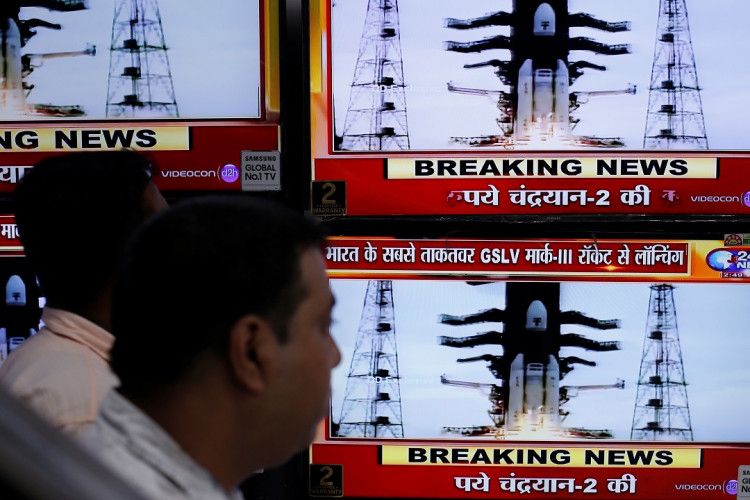India's Chandrayaan-2 mission has now officially embarked on a journey to the moon, although it would take a while to reach there. The rover and lander won't touch down until early September.
Landing on the moon doesn't necessarily have to take seven weeks, as the Apollo missions of the U.S. prove. However, Chandrayaan-2's lander and rover were originally scheduled to arrive Sept. 6, and that was before the delays that halted the launch for nearly a week.
The route Chandrayaan-2 will follow to get to the moon will showcase the power of the Indian rocket used to launch the space vehicle, called the Geosynchronous Satellite Launch Vehicle Mark-III.
This mission is momentous for India, as the country aims to become a major space player and put Indian astronauts in space by 2022.
"India wants to show, especially since Prime Minister (Narendra) Modi came into office, that India is a major power, and that India has to be treated as a major Indo-Pacific power," said Rajeswari Pillai Rajagopalan, head of the nuclear and space policy initiative at the Observer Research Foundation.
Before transferring to lunar orbit, Chandrayaan-2 was always scheduled to orbit the Earth for a while. But following the delay last week, Indian Space Research Organization engineers decided the timeline be adjusted to make sure that the landing schedule won't be heavily impacted.
It's crucial to maintain the landing time and keep it close to the schedule as possible because the lander and rover aren't designed to last the intense cold of the lunar nights, which last the equivalent of two weeks here on our planet.
The mission's new schedule indicates that Chandrayaan-2 will be orbiting the Earth for 23 days, eventually raising its altitude on one side of an elliptical orbit around Earth. By mid-August, the spacecraft will set its course for the moon and will complete several maneuvers to leave the planet orbit and start circling the moon.
The Chandrayaan-2 orbiter will release its Vikram lander in the first week of September. The lander will go down to reach the surface, touching down a bit later than the mission's original schedule. If no problems are detected, the Pragyan rover will be deployed.
If Chandrayaan-2's flight and landing become successful, India will become the first country to land on the south pole of the moon, also called the far side of the moon. It will also become the fourth country to land successfully on the moon, after Russia, the U.S., and China.





